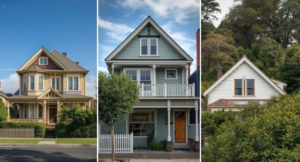Recent policy shifts on minor dwellings and granny flats will reshape New Zealand’s housing landscape. Hamish Firth from Mt Hobson Group was kind enough to share his insights with us.
What will it change?
- Consent-free builds (within limits)
A self-contained unit up to 70 m² on a flat site will be possible without formal resource or building consent, provided a licensed building practitioner follows the Building Code. - Faster delivery, lower holding costs
Cutting months off consenting removes a major bottleneck. Prefab and modular options can be installed quickly, saving both time and money. - Fully functional living
Kitchens and bathrooms are now allowed, turning what used to be a sleep-out into an independent dwelling. - Flexible use
Great for multigenerational households, extra income, or third-party rentals—so long as Healthy Homes standards and the Building Code are met.
Key Conditions
- Site must be relatively flat, outside flood zones, and clear of major services.
- Single-storey, no more than one metre off the ground.
- A licensed building practitioner is still required, and plans must be lodged with council for the record.
- Development contributions and service-connection fees may still apply.
- Adequate water-care or service capacity is essential; some areas may remain off-limits.
- Legislation is due later this year, with tweaks to the Building Act, RMA, and Residential Tenancies Act still to come.
Minor Dwelling vs Subdivision
- Minor dwelling: Ideal when you need space for family or a small rental stream without full subdivision overheads.
- Subdivision: Still the path for larger, higher-value builds you want to borrow against or sell separately—though it reintroduces traditional consent timelines and costs. Obviously would mean a much better value gain.
Granny flat or a full subdivision? Get a feasibility report quote from Hamish Firth
P 09 950 5110 M 021 66 1973 E hamish@mhg.co.nz W mhg.co.nz
A PO Box 37964, Parnell, Auckland 1151 A 481 Parnell Rd, Parnell, Auckland 1052




